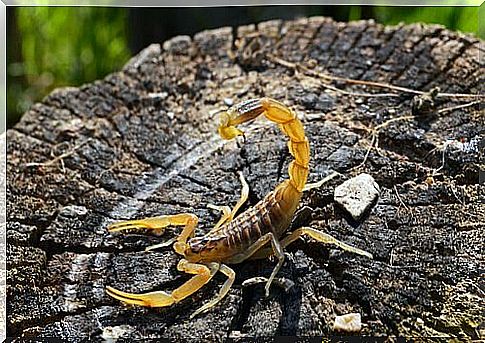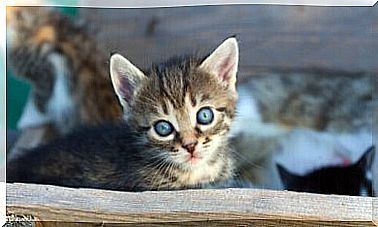Scorpions: Here Are The Most Dangerous Species

We have heard of deadly, poisonous scorpions, some blacks and some reds.
How many types of scorpions are there? So that you can identify them if you live in areas where they are present, we are going to tell you about some of them.
How many types of scorpions are there?
There are about 2 000 species of this animal, which are organized in 13 families spread over the world. All scorpions are poisonous, but the venom of some of them is stronger than that of others.
A scorpion can sting you almost without you realizing it, as they are very fast and adaptable animals, able to hide and sneak into any corner. However, they are also very fragile, as they can be crushed with a simple beach slipper. Maybe this weakness is what leads them to defend themselves so hard.
Here are the best known scorpions, although they are not the only species in the world:
Arizona bark scorpion
As mentioned above, there are some scorpions that can be deadly and among them we find this particular type of animal.
It is considered one of the most dangerous, as its venom is comparable to that of the most venomous snake in the world.

Furthermore, despite the extreme fragility of most scorpions, this species appears to be almost immortal, as it has been found alive in places where great disasters had occurred.
In fact, in winter times some frozen specimens were found which, once the moment of thawing arrived, resumed their normal rhythm of life as if nothing had happened.
They measure between 2.5 and 7 centimeters, depending on the specimen and their habitat; their colors are very similar to those of the sand, to be able to hide. They usually live in packs, unlike other species that love solitary life. Being close to their place of residence should make us pay particular attention as, as they move in groups, they are not difficult to see.
Golden Scorpion: Among the lethal scorpions
Its name comes from its almost transparent color which makes it look golden, although it is also known as one of the most dangerous scorpions in the world.

Unlike other species, in this type of scorpion the female is usually larger than the male and reaches about 10 centimeters, while the male usually does not exceed eight. Its pliers are not hard, so the sting is its main weapon.
This specimen lives in the Middle East and North Africa and its colors adapt according to the surrounding environment, which is usually the desert.
Emperor Scorpio
It has always been thought that black scorpions are the most dangerous in the world and, although the reality is not always this, in the case of the emperor this cliché is instead confirmed. Despite this, its venom is not as toxic as that of the two species mentioned above.
Its size is considerable, therefore, it can release a greater amount of poison, which is why it is perhaps one of the most feared scorpions. It can measure up to 17 centimeters, a length that is by no means negligible if compared to that of other species.
Despite this, this scorpion is not very active and, in fact, most of the stings that occur by this species are always related to a female who is afraid for her young.
Thick-tailed scorpion: one of the most dangerous scorpions
Here is yet another king of danger with a poison that has caused several deaths. Its physical feature that stands out most is, without a doubt, its thick tail, which looks like plastic.
They are unique animals in the world that live in the Middle East and that, perhaps for this reason, many want to keep as pets. Due to its dangerousness, however, this has been outlawed in many countries.
Although there are thousands of species of scorpions, these are the most common and the easiest to find, not to mention that they are also the most dangerous.









